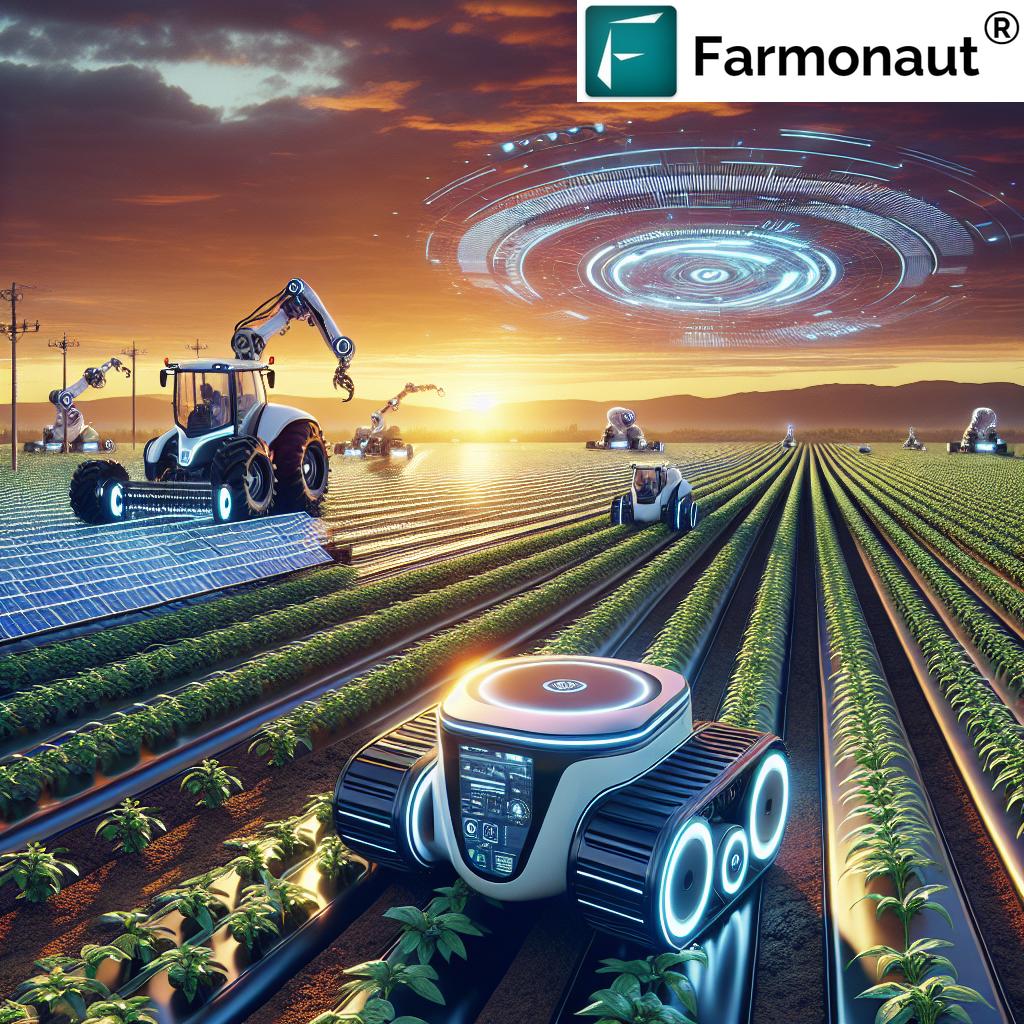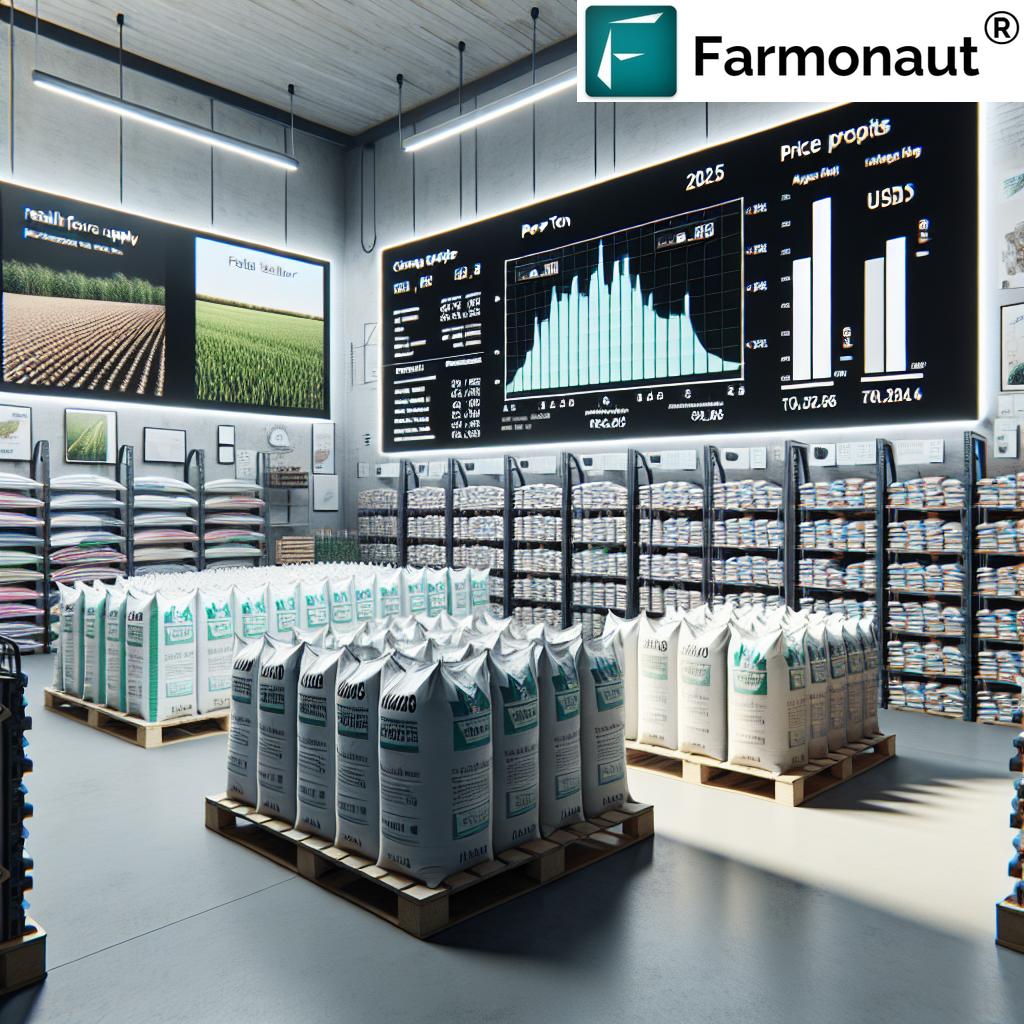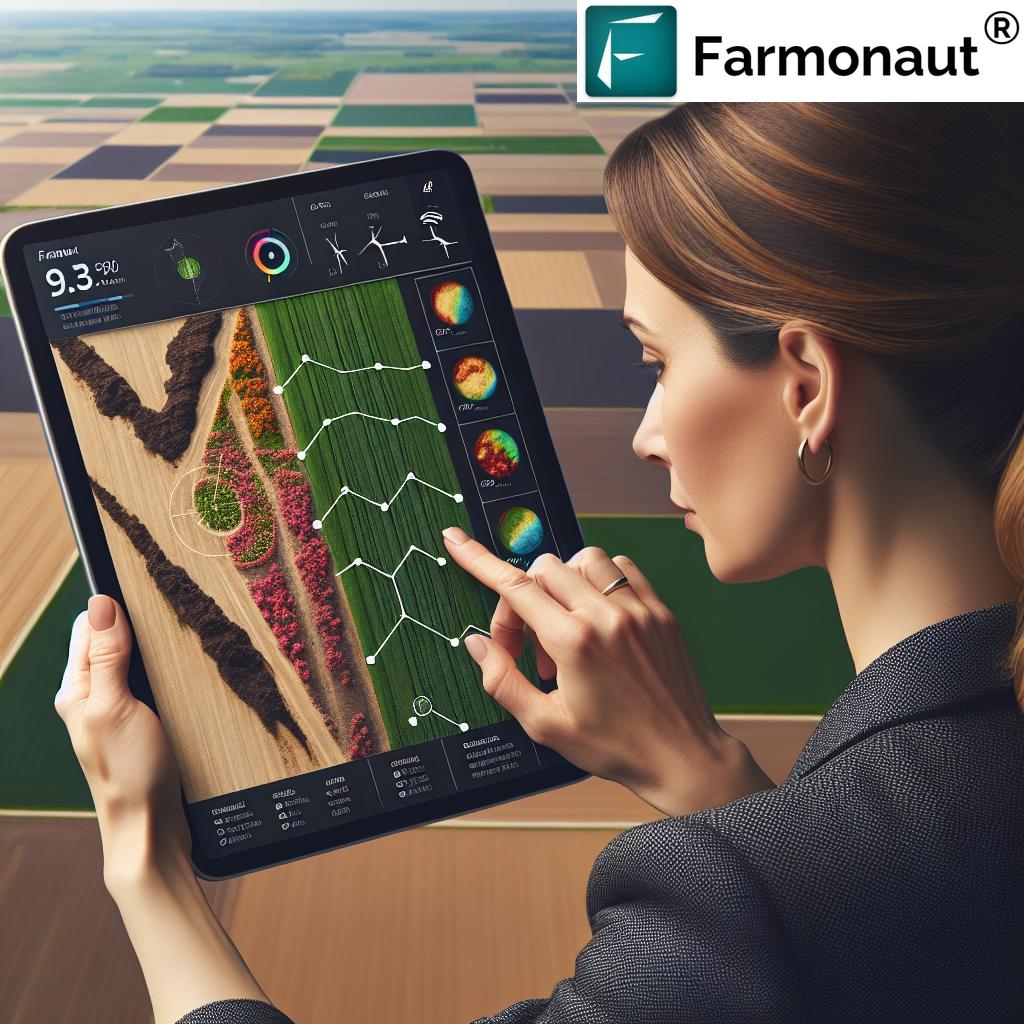“Alabama’s average annual rainfall of 56 inches supports diverse crop growth, ranking it among the top 10 wettest U.S. states.”
What Type of Climate Feature Benefits Alabama’s Agriculture?
Agriculture in Alabama: Climate Features, Urban Agriculture Benefits, Top Products, and Sustainable Practices in 2025
In 2025, Alabama’s agriculture sector remains a cornerstone of the state’s economy and culture. New technologies, sustainability demands, and evolving urban-rural dynamics are shaping how climate features, urban agriculture, and sustainable practices deliver the benefits that power top crops and farming success across the region.
This guide offers an in-depth look at what type of climate feature benefits Alabama’s agriculture, explores the urban agriculture trend, spotlights Alabama’s top agricultural products, and presents the benefits of sustainable agriculture that are securing the sector’s future.
Climate Features Benefiting Alabama’s Agriculture in 2025
Key Focus: What Type of Climate Feature Benefits Alabama’s Agriculture?
The climate of Alabama is defined by its humid subtropical environment, offering warm temperatures, long growing seasons, abundant rainfall, and diverse soils. These features have shaped the state’s agriculture for decades and continue to underpin Alabama’s position as a thriving farming state in 2025.
Warm Temperatures & Long Growing Season
Alabama’s mild, warm weather provides a growing season of 210–280 days. This long window enables multiple plantings and harvests across row crops like soybeans, cotton, peanuts, and vegetables.
- Reduces risk of frost damage to early crops
- Supports varieties of crops and livestock
- Allows for double-cropping or succession planting, improving farm output
Abundant Rainfall
The state receives an average of 50–60 inches of rainfall[1] each year, which is significantly higher than the national average. This ample rainfall:
- Ensures natural irrigation for crops and pasture lands
- Reduces dependence on expensive artificial irrigation systems
- Supports forest cover and the timber industry
- Minimizes drought risk in most years
What type of climate feature benefits Alabama’s agriculture? Without doubt, its high rainfall—ranking Alabama among the top 10 wettest U.S. states—coupled with extended warmth, is foundational to its agricultural resilience.
Soil Diversity and the Black Belt Region
An underappreciated feature is Alabama’s rich soil diversity. The famed Black Belt region boasts deep, fertile loam soils ideal for cotton, soybeans, and vegetables. Sandy soils in the southern regions nurture peanuts, while well-drained uplands support timber and livestock operations.
- Supports row crop production and mixed farming systems
- Facilitates sustainable practices like carbon footprinting and forest advisory services
- Enables crop-livestock integration, which maintains soil fertility and resilience
Microclimates and Topographical Diversity
Alabama’s microclimates, shaped by distinct topography from Appalachian foothills to coastal plains, benefit agriculture in varied ways:
- Northern hill regions support cool-season crops and fruits (apples, berries)
- Southern lowlands are ideal for pecans, peanuts, vegetables, and aquaculture
- Elevated microclimates enable specialty farming
Responding to Climate Change: Opportunities & Challenges
As climate change introduces more variable rainfall and temperature extremes, adaptive practices are key:
- Drought-tolerant crop varieties and precision irrigation
- Efficient resource management tools such as those offered by Farmonaut
- Agroforestry and cover cropping to sustain soil health
Despite emerging climate-related challenges, Alabama’s overall climate foundation remains favorable, especially when paired with technology and sustainable methods.
Key Climate Features, Sustainable Practices, and Top Crops in Alabama Agriculture (2025)
| Climate Feature | Estimated Benefit to Agriculture | Most Supported Crops (2025) | Sustainable Practice Adopted |
|---|---|---|---|
| Warm Temperatures | Extended growing season; reduced frost risk—~10% increase in harvest frequency | Cotton, Soybeans, Peanuts, Vegetables | Early planting, double-cropping, cover cropping, forest advisory |
| Ample Rainfall | Natural irrigation; lowers costs; minimizes drought stress | Soybeans, Corn, Forage Crops, Timber | Rainwater harvesting, water-use efficiency, carbon footprint tracking |
| Soil Diversity (Black Belt Region) | Supports wide crop diversity and healthy rotations | Cotton, Corn, Vegetables, Peanuts | Crop rotations, soil monitoring, precision fertilization |
| Microclimates (Topography) | Specialized crop and livestock opportunities; supports fruit & aquaculture | Fruits, Pecans, Berries, Aquaculture | Agroforestry, low-till orchards, buffer strips |
| Forest Cover & Timberlands | Sustains timber, improves carbon sequestration, wildlife habitat | Pine, Hardwood Timber | Sustainable forestry, replanting, resource management |
“By 2025, over 30% of Alabama’s urban farms are projected to adopt sustainable practices, boosting local food production.”
What Are the Benefits of Urban Agriculture in Alabama?
Urban agriculture in Alabama has emerged as a vital component of the agricultural landscape, particularly in cities like Birmingham, Huntsville, and Montgomery. In 2025, the rising trend toward sustainability and food resilience means urban farms are more important than ever.
Food Security & Local Access
The urban agriculture movement provides fresh, locally grown produce to communities that may otherwise face limited access to nutritious food—especially in so-called food deserts.
- Benefits of urban agriculture? Increases healthy food options in underserved areas
- Reduces “food miles”, lowering the carbon footprint of our diets
- Encourages consumption of vegetables, fruits, and herbs, improving public health
- Boosts year-round food production using protected cultivation
Community Engagement, Economic, and Social Benefits
Urban gardens and small-scale farming operations become community hubs in Alabama’s cities:
- Provide employment opportunities in farming, food processing, and urban ag supply chains
- Act as platforms for agricultural education and environmental stewardship for youth and adults alike
- Support community resilience and social interaction in urban neighborhoods
Environmental and Quality-of-Life Improvements
- Urban farming reduces waste and recycles urban resources (composting, rainwater use)
- Green spaces improve air quality and help reduce urban heat islands
- Native gardens and polycultures enhance local biodiversity
- Vertical and rooftop farms make use of limited space, maximizing food output per square foot
In Alabama’s 2025 urban agriculture scene, technology like hydroponic and vertical systems, as well as data-driven decision making, is making efficient use of resources possible even within city limits.
Farmonaut’s advanced satellite-based monitoring, available on web and mobile platforms, empowers Alabama’s urban agriculture projects to:
- Monitor crop health and soil conditions in real time, even in small-scale or rooftop gardens
- Plan efficient resource allocation for urban farms using tools like Farmonaut Fleet Management
- Access blockchain-based traceability systems for transparent local supply chains: Farmonaut Traceability Solution
The rapid adoption of sustainable practices in urban Alabama is projected to increase local food supplies and support community-driven resilience.
Alabama’s Top Agricultural Products in 2025
Understanding alabama’s top agricultural products is central to grasping the state’s economic and environmental priorities. The agricultural sector is defined both by its diversity and its major commodity crops.
-
Poultry and Eggs:
- Poultry industry (primarily broiler chickens) is the largest contributor to Alabama’s farming economy.
- Supports thousands of jobs and contributes billions annually.
- Poultry integrates with row crop production (e.g., soybeans for feed).
-
Cattle and Calves:
- Widespread beef cattle operations utilize pastures, hay fields, and forage crops.
- Dairy and calf production support local and regional meat markets.
-
Soybeans and Corn:
- Primary row crops by acreage and output in 2025.
- Serve as livestock feed and are critical to the overall agricultural system.
-
Want to track soybean and corn health via satellite?
Farmonaut Crop Health Monitoring enables Alabama growers to use AI tools for real-time precision agriculture.
Large-scale management here.
-
Cotton:
- Iconic to the Black Belt region and still vital for the state economy.
- Modern cotton varieties are more resilient—producing higher, more consistent yields.
- See how technology and climate support sustainable cotton in this video below:
-
Peanuts:
- Thrive in the sandy, well-drained soils of southern Alabama.
- Alabama remains a top U.S. peanut exporter both for food and global markets.
-
Forestry Products:
- Timber and pine plantations cover nearly two-thirds of the state.
- Major source for renewable biomass, lumber, and paper industries.
- Forest cover also plays a role in carbon sequestration monitoring.
-
Fruits and Vegetables:
- Commercial production of watermelons, peaches, tomatoes, sweet potatoes.
- Locally grown and often consumed within Alabama or the Southeast.
What is the Agriculture of Alabama? (2025 Overview)
Agriculture in Alabama is more than a business—it’s a dynamic mix of tradition, innovation, and diversity that shapes our local economy and culture:
- Contributes nearly $75 billion annually to the state economy
- Integrates rural and urban communities, supporting livelihoods across all counties
-
Crop Production:
- Staples: Soybeans, corn, cotton, peanuts
- Specialty crops: Strawberries, blueberries, organic vegetables
-
Livestock & Poultry:
- Broiler chickens dominate, with cattle, goats, hogs rounding out the mix
- Integrated livestock-crop systems reduce waste and improve soil health
-
Forestry & Timber:
- Timberlands cover almost two-thirds of Alabama—central for carbon sequestration, biodiversity, and renewable energy
2025 sees rising adoption of precision agriculture tools such as satellite crop monitoring, drones, and AI-driven planning. Farmonaut’s platform enables Alabama farmers to maximize yields, reduce environmental impact, and adapt to climate change with data-driven confidence.
Learn more about Farmonaut’s Large-Scale Farm Management for Alabama producers
What Are the Benefits of Sustainable Agriculture in Alabama?
The benefits of sustainable agriculture are clear and growing in Alabama. With increasing pressure on land, water, and natural resources, sustainable practices offer a way to secure future production while reducing negative environmental impacts.
-
Environmental Stewardship:
- Minimizes soil erosion, preserves soil fertility via crop rotations/cover crops
- Reduces chemical inputs via integrated pest management
- Improves biodiversity and ecological services
-
Tracks and reduces carbon emissions across farms and supply chains—
learn about Farmonaut’s Carbon Footprinting
-
Economic Resilience:
- Diverse crops and efficient resource use minimize external dependency
- Small- and mid-sized farms gain more consistent revenues
-
Improved Public Health:
- Reduces chemical residues on crops and produce
- Encourages healthful eating with nutrient-rich crops & vegetables
-
Climate Change Mitigation:
- Increases soil and forest carbon sequestration
- Promotes renewable energy use on farms
- See how carbon monitoring supports sustainability goals
-
Social & Community Benefits:
- Strengthens local food systems and farm-to-consumer transparency
- Farmonaut’s Blockchain Traceability ensures supply chain authenticity
- Promotes fair labor, preserves farmland for future generations
In 2025 and beyond, programs including technical assistance, incentives, market development for organic/local produce, and community-driven sustainability education are widespread in Alabama’s agricultural scene.
Farmonaut’s carbon tracking and resource management solutions are powering more efficient and climate-resilient farms by providing real-time emissions data and actionable strategies.
Farmonaut: Precision Technology for Alabama Farmers
We at Farmonaut empower Alabama farmers of all sizes with real-time, satellite-based crop monitoring, AI-driven advisory, and resource optimization tools—making precision agriculture accessible for both urban and rural Alabama.
-
Satellite Crop Health Monitoring:
- Visual NDVI imagery for timely detection of plant stress across row crops, cotton, peanuts
- Optimize irrigation, fertilizer, and management strategies
- Reduce food and resource waste
-
Jeevn AI Advisory System:
- Provides personalized weather forecasts and crop recommendations
- Improves decision-making for Alabama’s diverse farms
-
Blockchain Product Traceability:
- Ensures quality and transparency from farm to local, regional, and export markets
- Strengthens consumer trust for Alabama produce
-
Fleet and Resource Management:
- Enables efficient fleet tracking for logistics, harvest scheduling, and safety
- See our Fleet Management platform
-
Carbon Footprinting:
- Monitor and reduce your farm’s carbon impact
- Supports sustainability certifications and market access
- Explore Carbon Footprinting here
-
Crop Loan and Insurance Verification:
- Provides satellite-verified evidence for quick, trusted claims and access to agricultural financing
- Learn more about our Crop Loan and Insurance verification services
Our API and developer documentation allow seamless integration—with apps, research, and corporate solutions for Alabama’s ever-evolving agricultural landscape.
Access the Farmonaut API here
Frequently Asked Questions ?
What type of climate feature benefits Alabama’s agriculture most?
Alabama’s agriculture benefits significantly from its humid subtropical climate, characterized by warm temperatures, long growing seasons, and abundant rainfall (averaging 56 inches annually). The state’s diverse soils, microclimates, and forest cover also contribute, supporting a broad range of crops and livestock.
What are the benefits of urban agriculture in Alabama?
Urban agriculture in Alabama improves food access, enhances community resilience, creates green spaces, reduces environmental impact, and fosters local economic development. In 2025, a third of urban farms are projected to integrate sustainable practices and new technology, further boosting fresh food production.
What is the agriculture of Alabama most known for?
Poultry (broiler chickens) and eggs, cattle and calves, soybeans, corn, cotton, peanuts, timber, and a variety of fruits and vegetables are the mainstays of Alabama’s agricultural sector.
What are the benefits of sustainable agriculture in Alabama?
Sustainable agriculture reduces environmental impact, improves soil and water quality, enhances biodiversity, increases farm resilience, boosts rural economies, and supports healthier food systems—benefiting both farmers and communities statewide.
How does Farmonaut help Alabama farmers in 2025?
We deliver real-time satellite monitoring, AI advisory, resource management, carbon tracking, and traceability tools that support Alabama’s traditional and urban farmers—enabling informed decisions, better yields, and sustainable operations using affordable technology.
How can I access Farmonaut’s technology?
Through our Android, iOS, and web/browser app, or via API access for developers, agribusinesses, and institutions across Alabama. Read the integration documentation here.
Conclusion: Alabama’s 2025 Agriculture—A Climate for Success
The answer to what type of climate feature benefits Alabama’s agriculture is multifaceted—rooted in abundant rainfall, mild warmth, long seasons, diverse soils, and the adaptive spirit of Alabama’s farmers. The rising trend of urban agriculture, a commitment to sustainability, and adoption of groundbreaking technologies are guiding Alabama through 2025 and beyond.
As one of the top U.S. producers of cotton, peanuts, soybeans, corn, timber, poultry, fruits, and vegetables, Alabama’s agriculture sector remains resilient in the face of climate challenges and market change. Our natural assets—when stewarded with responsible, innovative farming practices—will keep supporting Alabama’s economy, food systems, and communities for generations.
Ready to make the most of Alabama’s climate and agricultural opportunities? Join Farmonaut—unlock precision, sustainability, and transparency in your Alabama farm today.













